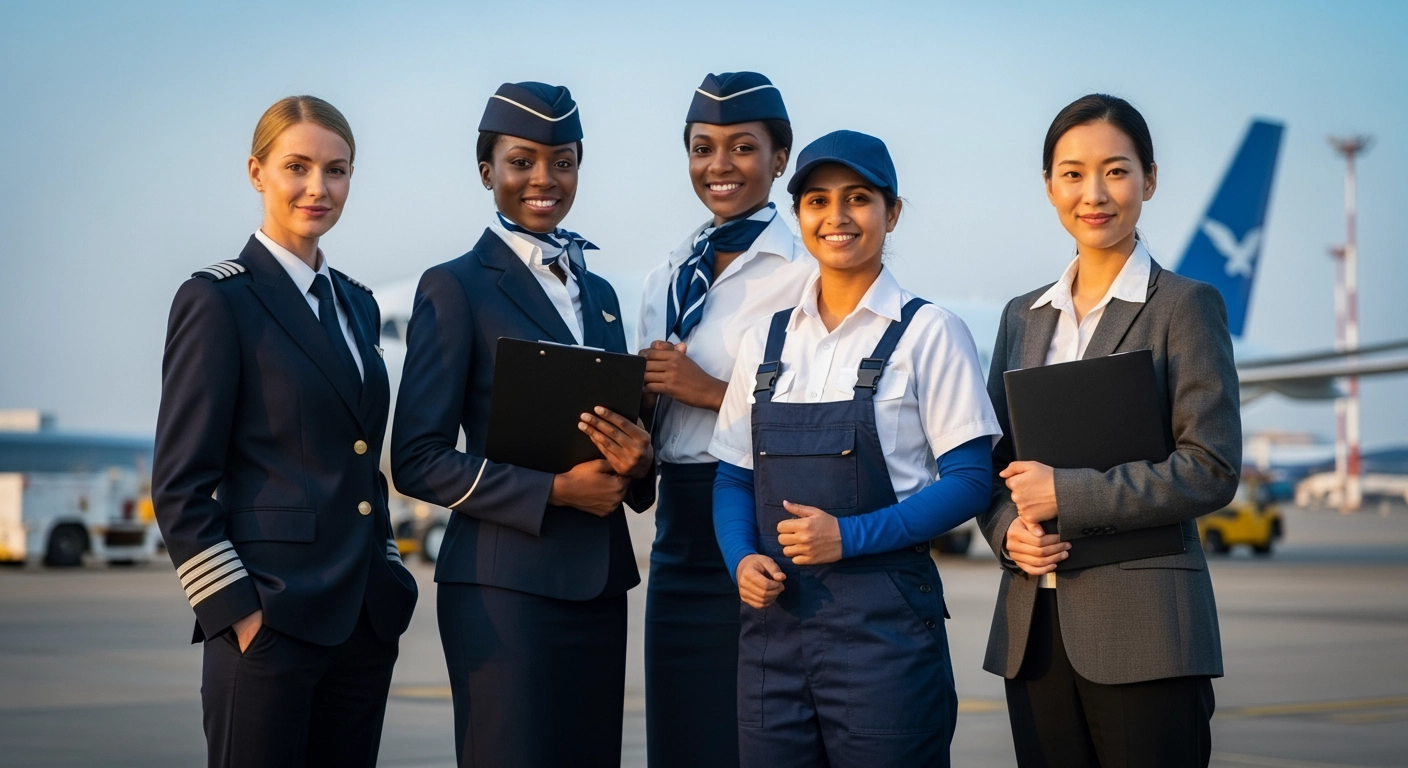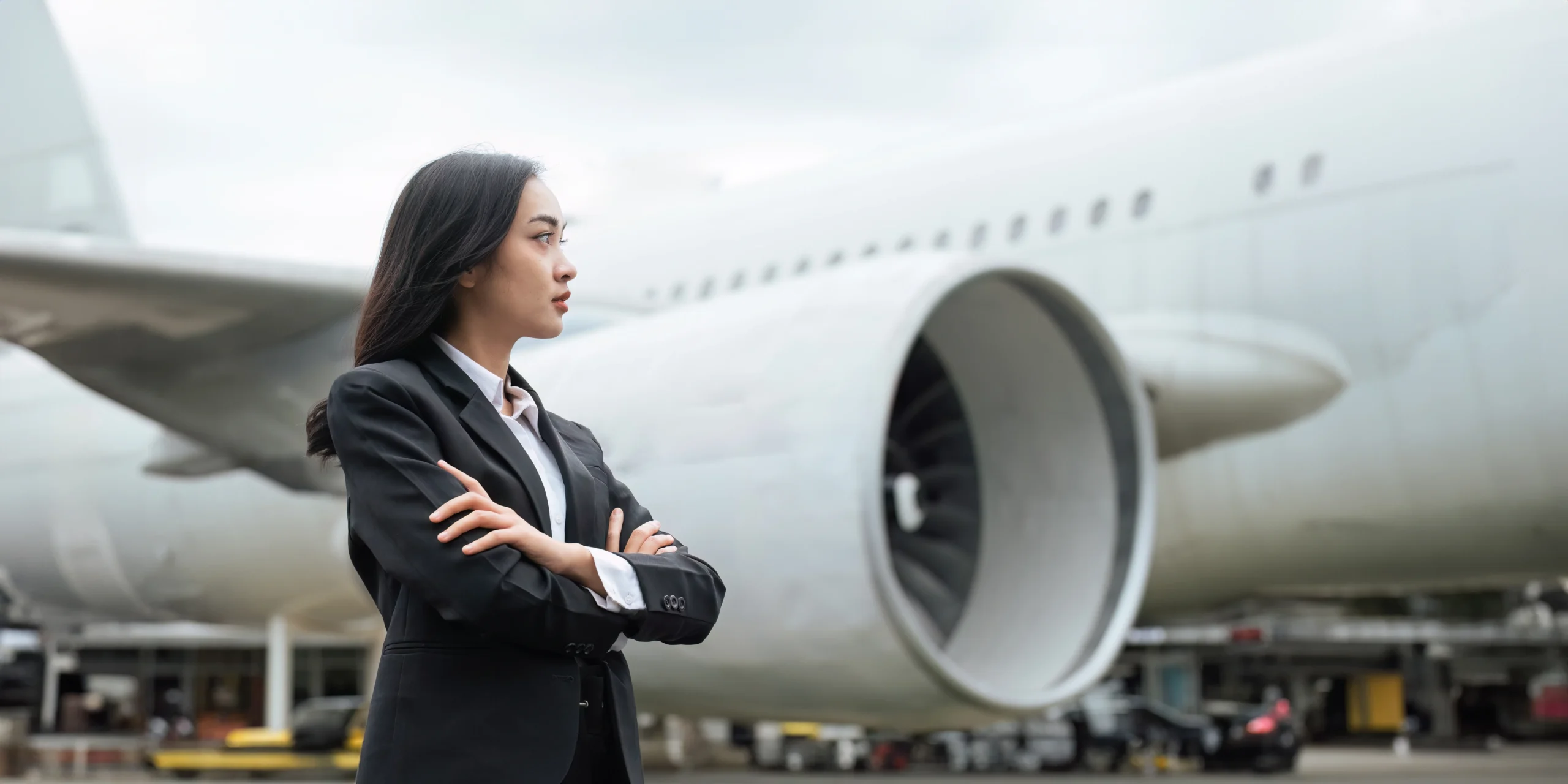Earlier this year, a photo went viral showing an all-female flight crew piloting a commercial airliner. It quickly captivated aviation enthusiasts worldwide, not just for the impressive display of skill, but because it symbolized a deeper, industry-wide transformation. For decades, commercial aviation has been dominated by men, in roles ranging from pilots to top executives. Today, women are stepping into roles that were once considered off-limits: leading airlines, managing MRO networks, and taking to the skies as pilots and crew, reshaping the future of aviation as we know it.
Airlines are no longer just relying on traditional pipelines for leadership. Women are increasingly taking the helm, guiding day-to-day operations and also shaping strategy, sustainability initiatives, and workforce culture. Notable leaders include Joanna Geraghty, the CEO of JetBlue, Vanessa Hudson, CEO of Qantas, and Marjan Rintel, CEO of KLM. These women bring diverse perspectives to an industry where decision-making has historically been homogeneous. Their leadership drives tangible results in innovation, passenger satisfaction, and corporate responsibility.
Their presence at the top reflects a larger trend toward inclusivity. Airlines recognize that diverse leadership fosters creativity, enhances problem-solving, and aligns with global passengers’ expectations for equality and fairness. These women are defining the narrative, demonstrating that gender does not define skill, strategy, or vision.
Programs and Initiatives Supporting Women
In 2021 globally, women comprised 4.7% of all pilots, 3.1% of aircraft maintenance engineers, and 21.1% of air traffic controllers. In 2022, just 6% of Airline CEO’s were women. Initiatives like IATA’s 25by2025 campaign has aimed to increase female representation across the aviation sector to 25% by 2025. Airlines participating in this initiative set measurable targets for leadership, technical roles, and training programs. It’s a clear acknowledgement that the industry benefits from a more diverse workforce. From 2021 to 2023, this campaign led to an increase of +37% women in the flight deck, reaching 6%, and +24% of women in senior roles, reaching 31%.
The IATA have announced the winners of their annual IATA Diversity & Inclusion Awards. Winners this year include:
- Inspirational Role Model: Captain Claudia Zapata-Cardone, President of the Latin Professionals in Aerospace (LPA). A platform focused on breaking barriers and opening doors for under-represented communities in aviation.
- High Flyer: Katherine Moloney, Founder of Elevate (her) Aviation. An online resource platform and global community that is dedicated to increasing the percentage of women in aviation across a range of roles.
- Diversity & Inclusion Team: Air Canada who are setting new standards in inclusive aviation through their CARE model – Community Outreach, Accountability, Representation, and Engagement & Belonging.
Educational programs and scholarships are also playing a crucial role. For example, Women in Aviation International (WAI) offers scholarships for aspiring pilots and technical professionals. These programs address one of the industry’s most pressing issues: the historically low number of women entering technical aviation careers. Currently, women make up only 10.8% of pilots globally, illustrating the scope of both the challenge and the opportunity.
Mental Health and Wellbeing: Leading by Example
Women in aviation are also pioneering initiatives around mental health and wellbeing. With long hours, irregular schedules, and high-stress environments, airline work can be mentally taxing. Leaders like Captain Reyné O’Shaughnessy, founder of Piloting 2 Wellbeing & Aviation Wellbeing Institute, are advocating for comprehensive support systems that address fatigue, stress management, and psychological wellbeing. These programmes are critical for retaining talent, reducing burnout, and ensuring safer skies for everyone.
By prioritizing wellbeing, women in leadership create environments that encourage both professional growth and personal sustainability. This not only benefits female employees but also cultivates a workplace culture where all team members can thrive.
Breaking Barriers Across Roles
The rise of women in aviation is inspiring; female pilots, engineers, and cabin crew are making an impact at every level. Stories of women taking their first solo flights, leading international projects in maintenance, or negotiating complex airline partnerships inspire the next generation. As role models, these women demonstrate that aviation careers are accessible, fulfilling, and rewarding for those who are willing to pursue them. And it’s not just about visibility; it’s about influence. Female leaders are directly shaping recruitment strategies, corporate culture, and innovation pipelines. Their impact reaches far beyond the cockpit or the boardroom, driving structural changes that will influence aviation for decades.

Leading Companies and Their Impact
Many of the world’s leading aviation companies now boast women at their helm or in influential leadership positions. Airlines like JetBlue, Qantas and KLM have female executives directing strategy, fleet expansion, and sustainability initiatives. MRO providers, such as Standard Aero, and airport networks also showcase women in senior roles, demonstrating that leadership diversity extends across all facets of aviation.
Their contributions have practical effects: from implementing innovative operational procedures to spearheading sustainability initiatives, female leaders are improving efficiency and passenger experience. Their presence also signals to aspiring female professionals that opportunities exist across the industry’s full spectrum.
“At Aerviva, we’ve seen first-hand how women are reshaping aviation,” says Jekaterina Shalopanova, CBO of AERVIVA. “Diversity in leadership and technical roles isn’t just about equality; it’s about performance. Teams led by women often bring new levels of collaboration, empathy, and strategic vision, qualities that are essential for an industry that’s evolving as rapidly as aviation.”
A Transforming Industry
The rise of women in aviation is reshaping the entire industry, bringing new perspectives, driving innovation, and advocating for well-being in a historically male-dominated field. Programs like 25by2025 and initiatives from organizations such as the WAI are accelerating change, while female leaders in airlines and MRO networks are proving that talent and leadership know no gender.
For the next generation of women considering a career in aviation, the message is clear: the skies are open. Whether piloting aircraft, managing global operations, or pioneering technical innovation, women are shaping a more inclusive, innovative, and sustainable future for aviation. And with partners like AERVIVA providing recruitment expertise, career guidance, and access to opportunities across the aviation industry, the pathway has never been more accessible. For women ready to make their mark, AERVIVA is committed to helping them take flight.

